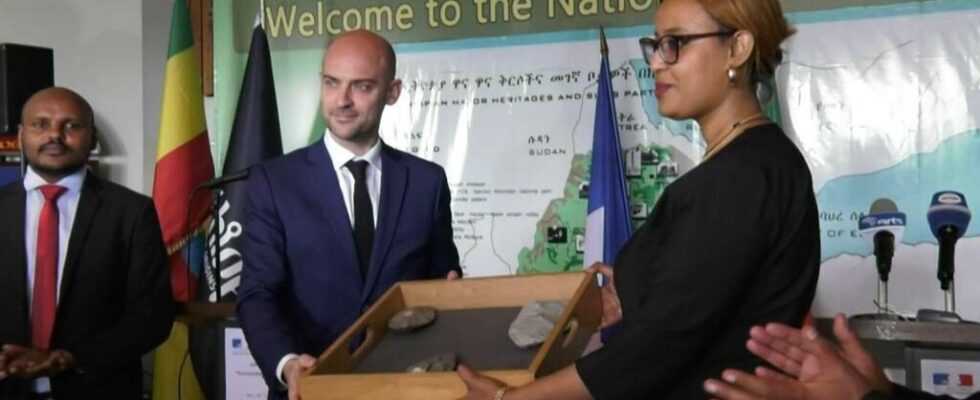French Foreign Minister Jean-Noël Barrot on Saturday initiated the handover of some 3,500 archaeological objects belonging to Ethiopia that had been in France since the 1980s for study.
2 mins
Jean-Noël Barrot symbolically presented two bifaces and a stone cutter to the Ethiopian Minister of Tourism, Selamawit Kassa, at the end of a visit to the national museum where the head of French diplomacy was able to see the famous skeleton of Lucy discovered in Ethiopia, just fifty years ago.
“ I had the great pleasure of officially giving you two magnificent bifaces and a stone cutter as samples of the nearly 3 500 objects from the excavations which were carried out on the Melka Kunture site under the direction of the professor [Jean] Chavaillon », declared the French minister. “ These objects, which by mutual agreement had been sent to France for study, now find their place in Ethiopian paleontological collections », added the minister, visiting Ethiopia as part of an African tour.
Jean-Noël Barrot: “These objects are coming back today”
Currently stored at the French embassy in Addis Ababa, they must be handed over in their entirety next Tuesday to the Ethiopian heritage department. “ This is a delivery and not a restitution to the extent that the objects have never been included in French public collections. “, told AFP Laurent Serrano, cultural advisor at the French embassy in Addis Ababa.
7 million euros for the preservation of heritage in Ethiopia
Alongside this handover, Jean-Noël Barrot announced the launch of a new project, called “Sustainable Heritage in Ethiopia”, an extension of the “Sustainable Lalibela” project, in favor of the development of centuries-old sites in drawing on the experience acquired both by local communities, political and religious authorities, as well as scientific research.
For this new project, France will contribute 7 million euros after the 3 million for Lalibela, an emblematic city in northern Ethiopia which owes its fame to its churches dug into the rock.
For two years, France has also contributed 25 million euros to the renovation of the National Palace, transformed into a national museum.
